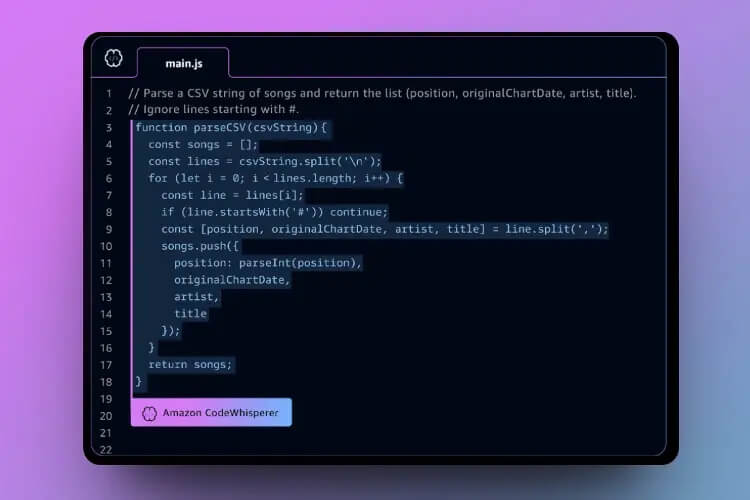Chatgpt Prompts for web developers

A web developer is a professional who creates, designs, builds, and maintains websites, software, and web applications. They use web programming languages such as JavaScript, HTML, and CSS to implement visual designs and layouts, integrate graphics and content, optimize website performance and capacity, and test to ensure solid performance across any type of computer, mobile, or device screen.
Web developers typically specialize in either front-end development or back-end development, but some versatile professionals do both, and they’re called “Full-Stack Developers.” Front-end developers focus on the client-side of web development, while back-end developers focus on the server-side. Some web developers work independently as freelancers or with company teams to create websites, while others work in industries including publishing, management consulting, and advertising. Educational requirements for web developers vary, ranging from a high school diploma to a bachelor’s degree
Top 10 ChatGPT prompts helpful for web developers
- Web Development Architecture Prompts
- HTML and Markdown Prompts
- CSS Prompts
- JavaScript Prompts
- APIs and Data Parsing Prompts
- Security Prompts
- Code Debugging & Optimization Prompts
- Interview Preparation Prompts
- Code Generation
- Code Completion
These prompts can help web developers do their daily tasks and projects more efficiently. They can save time and effort and make work easier. However, it’s important to note that ChatGPT has some limitations and cannot replace a developer’s own knowledge and expertise. It’s also important to fact-check any research it does and be aware that its training data is only up to 2021, so it may not be aware of current trends or events.
How can ChatGPT prompts help web developers improve their workflow?
- Code generation: ChatGPT can generate code snippets for web developers, which can save time and effort.
- Code completion: ChatGPT can suggest code completions for web developers, which can help them write code more efficiently.
- Code review: ChatGPT can review code and suggest improvements, which can help web developers write better code.
- Code debugging: ChatGPT can help web developers debug their code by suggesting possible solutions to errors.
- Shortcuts and cheatsheets: ChatGPT can provide shortcuts and cheatsheets for web developers, which can help them work more efficiently.
- Documentation: ChatGPT can help web developers generate documentation for their code, which can be helpful for future reference.
- Interview preparation: ChatGPT can help web developers prepare for interviews by providing interview questions and answers.
- Git and GitHub: ChatGPT can help web developers with Git and GitHub by suggesting commands and workflows.
- Testing: ChatGPT can help web developers with testing by suggesting test cases and frameworks.
- Security: ChatGPT can help web developers with security by suggesting best practices and tools.
Overall, ChatGPT prompts can be a valuable tool for web developers to improve their workflow and productivity. However, it’s important to note that ChatGPT has some limitations and cannot replace a developer’s own knowledge and expertise.
ChatGPT prompts that are particularly helpful for debugging web applications
- Act as a debugging assistant and provide possible reasons for an error message or behavior.
- Provide suggestions for fixing a specific error message or behavior.
- Analyze the interactions between different parts of the code to identify the root cause of an error.
- Provide suggestions for optimizing code performance.
- Review code and suggest improvements.
- Provide shortcuts and cheatsheets for debugging tools and frameworks.
- Provide examples of code snippets that can be used to debug specific issues.
- Provide suggestions for testing frameworks and test cases.
Prompts that can help web developers identify and fix security vulnerabilities in web applications
- Identify security vulnerabilities in the following code
- Explain the concept of secure coding practices in web development. Discuss best practices for handling user input, managing passwords securely, and preventing common security vulnerabilities.
- Provide suggestions for implementing security best practices in web applications, such as using HTTPS, input validation, and access control.
- Analyze the interactions between different parts of the code to identify potential security vulnerabilities.
- Provide suggestions for testing frameworks and test cases that can help identify security vulnerabilities.
- Provide examples of code snippets that can be used to fix specific security vulnerabilities, such as SQL injection or cross-site scripting (XSS).
Coding examples that can be generated using ChatGPT prompts
- Generate a Python function that reverses a string using a slice.
|
|
- Identify any security vulnerabilities in the following code snippet
|
|
One potential security vulnerability in this code is that it does not validate the user input for the filename, which could allow an attacker to execute arbitrary code or access sensitive files. To fix this vulnerability, the input should be validated and sanitized before being used.
- Review the following JavaScript code for code smells and suggest improvements.
|
|
This code is simple and straightforward, but one potential improvement could be to add error handling for cases where the input is not a number. For example:
|
|
- Generate a code snippet that uses the Fetch API to make an HTTP request and parse the response as JSON.
|
|













Sharing is caring!